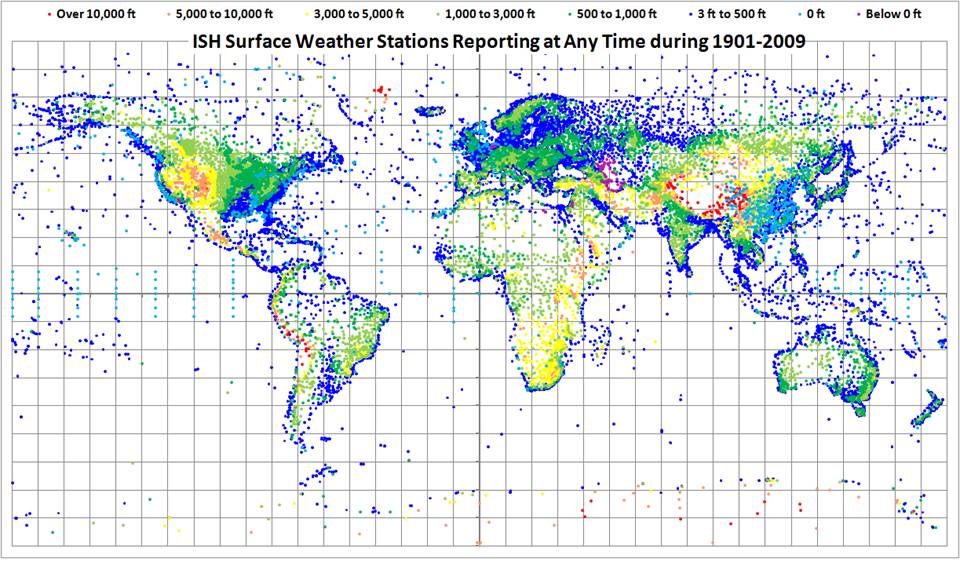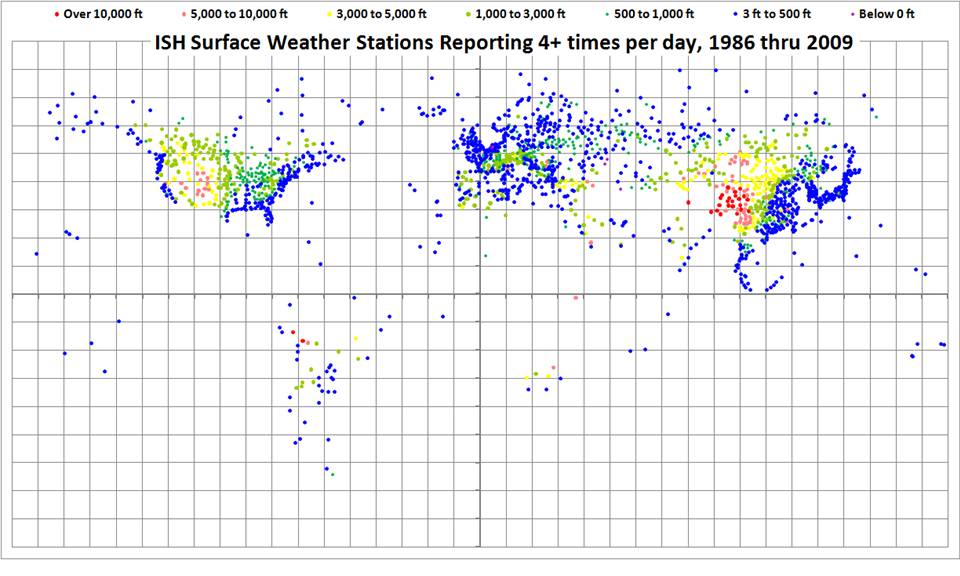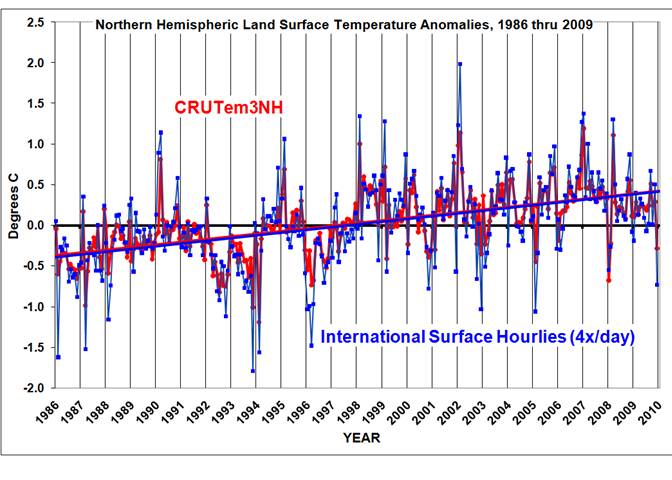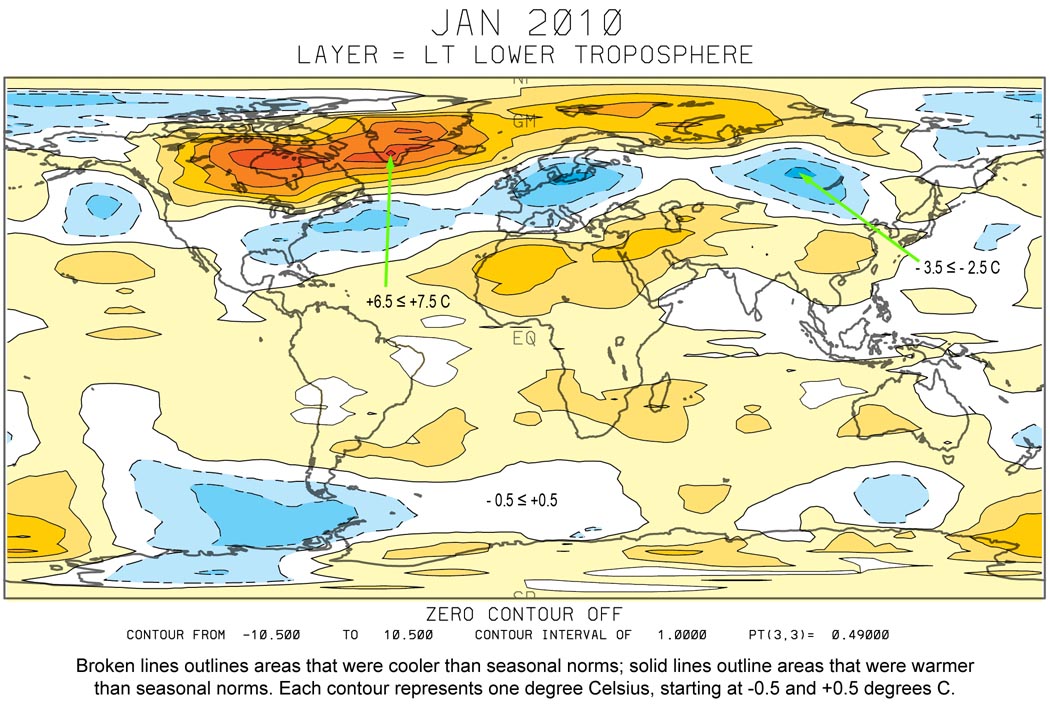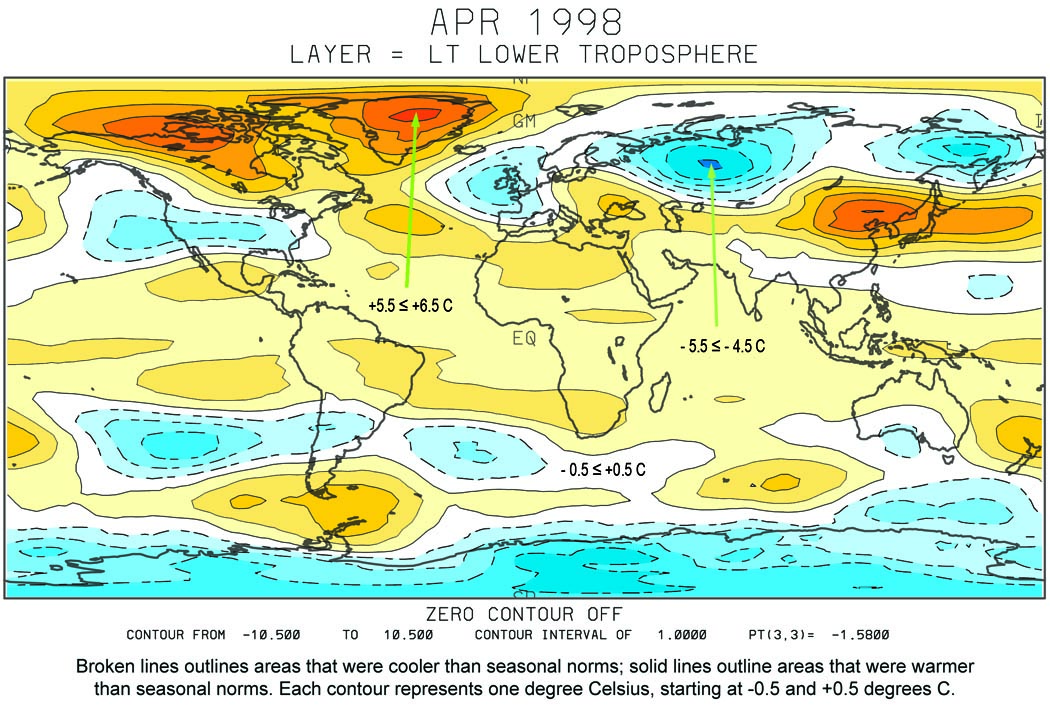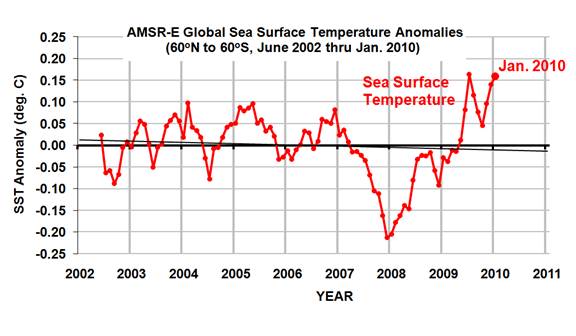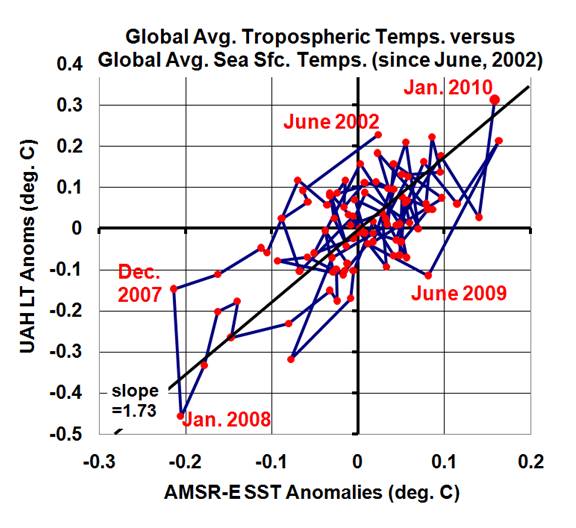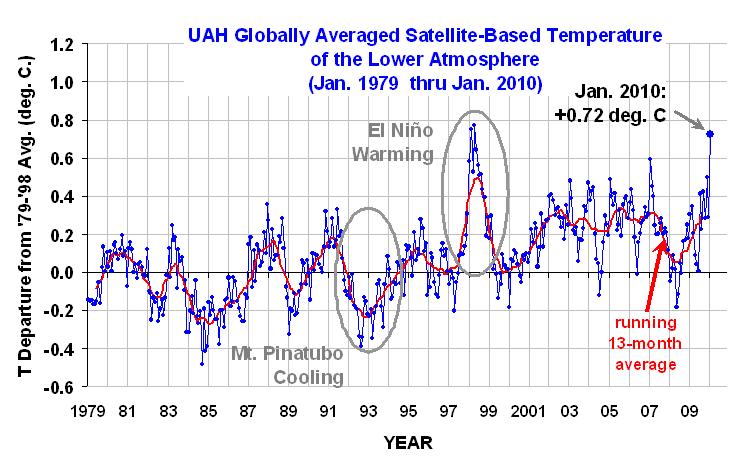INTRODUCTION
As I discussed in my last post, I’m exploring the International Surface Hourly (ISH) weather data archived by NOAA to see how a simple reanalysis of original weather station temperature data compares to the Jones CRUTem3 land-based temperature dataset.
While the Jones temperature analysis relies upon the GHCN network of ‘climate-approved’ stations whose number has been rapidly dwindling in recent years, I’m using original data from stations whose number has been actually growing over time. I use only stations operating over the entire period of record so there are no spurious temperature trends caused by stations coming and going over time. Also, while the Jones dataset is based upon daily maximum and minimum temperatures, I am computing an average of the 4 temperature measurements at the standard synoptic reporting times of 06, 12, 18, and 00 UTC.
U.S. TEMPERATURE TRENDS, 1973-2009
I compute average monthly temperatures in 5 deg. lat/lon grid squares, as Jones does, and then compare the two different versions over a selected geographic area. Here I will show results for the 5 deg. grids covering the United States for the period 1973 through 2009.
The following plot shows that the monthly U.S. temperature anomalies from the two datasets are very similar (anomalies in both datasets are relative to the 30-year base period from 1973 through 2002). But while the monthly variations are very similar, the warming trend in the Jones dataset is about 20% greater than the warming trend in my ISH data analysis.
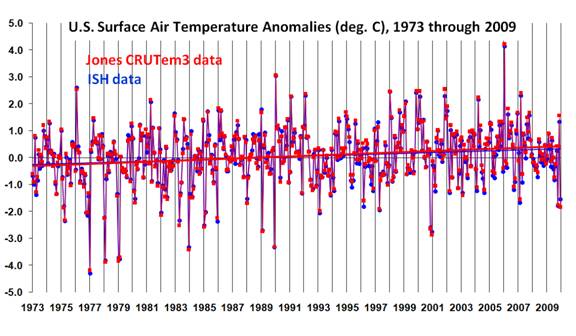
This is a little curious since I have made no adjustments for increasing urban heat island (UHI) effects over time, which likely are causing a spurious warming effect, and yet the Jones dataset which IS (I believe) adjusted for UHI effects actually has somewhat greater warming than the ISH data.
A plot of the difference between the two datasets is shown next, which reveals some abrupt transitions. Most noteworthy is what appears to be a rather rapid spurious warming in the Jones dataset between 1988 and 1996, with an abrupt “reset” downward in 1997 and then another spurious warming trend after that.
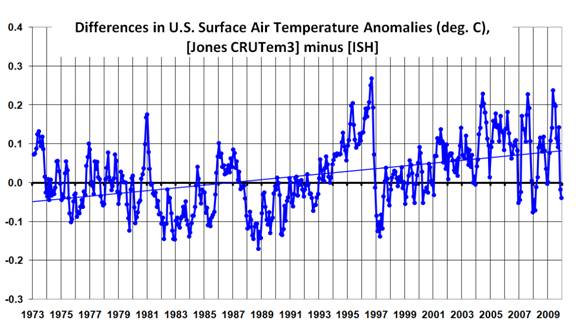
While it might be a little premature to blame these spurious transitions on the Jones dataset, I use only those stations operating over the entire period of record, which Jones does not do. So, it is difficult to see how these effects could have been caused in my analysis. Also, the number of 5 deg grid squares used in this comparison remained the same throughout the 37 year period of record (23 grids).
The decadal temperature trends by calendar month are shown in the next plot. We see in the top panel that the greatest warming since 1973 has been in the months of January and February in both datasets. But the bottom panel suggests that the stronger warming in the Jones dataset seems to be a warm season, not winter, phenomenon.
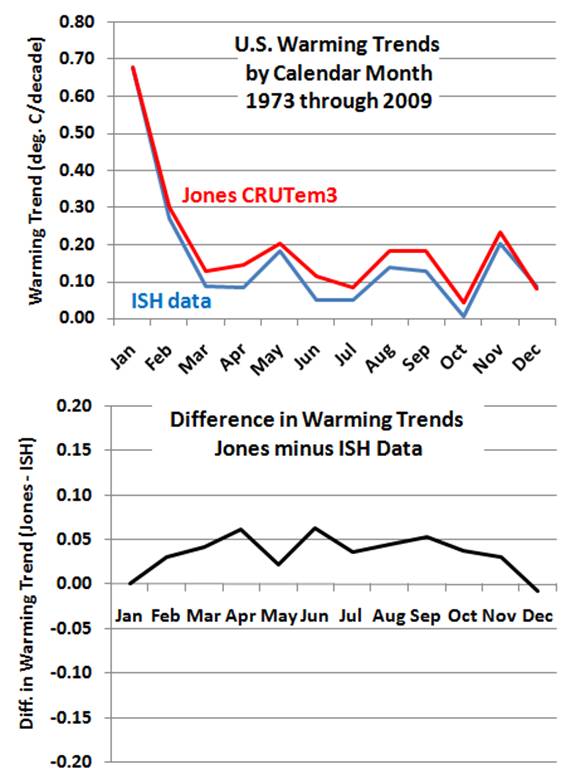
THE NEED FOR NEW TEMPERATURE RENALYSES
I suspect it would be difficult to track down the precise reasons why the differences in the above datasets exist. The data used in the Jones analysis has undergone many changes over time, and the more complex and subjective the analysis methodology, the more difficult it is to ferret out the reasons for specific behaviors.
I am increasingly convinced that a much simpler, objective analysis of original weather station temperature data is necessary to better understand how spurious influences might have impacted global temperature trends computed by groups such as CRU and NASA/GISS. It seems to me that a simple and easily repeatable methodology should be the starting point. Then, if one can demonstrate that the simple temperature analysis has spurious temperature trends, an objective and easily repeatable adjustment methodology should be the first choice for an improved version of the analysis.
In my opinion, simplicity, objectivity, and repeatability should be of paramount importance. Once one starts making subjective adjustments of individual stations’ data, the ability to replicate work becomes almost impossible.
Therefore, more important than the recently reported “do-over” of a global temperature reanalysis proposed by the UK’s Met Office would be other, independent researchers doing their own global temperature analysis. In my experience, better methods of data analysis come from the ideas of individuals, not from the majority rule of a committee.
Of particular interest to me at this point is a simple and objective method for quantifying and removing the spurious warming arising from the urban heat island (UHI) effect. The recent paper by McKitrick and Michaels suggests that a substantial UHI influence continues to infect the GISS and CRU temperature datasets.
In fact, the results for the U.S. I have presented above almost seem to suggest that the Jones CRUTem3 dataset has a UHI adjustment that is in the wrong direction. Coincidentally, this is also the conclusion of a recent post on Anthony Watts’ blog, discussing a new paper published by SPPI.
It is increasingly apparent that we do not even know how much the world has warmed in recent decades, let alone the reason(s) why. It seems to me we are back to square one.

 Home/Blog
Home/Blog
